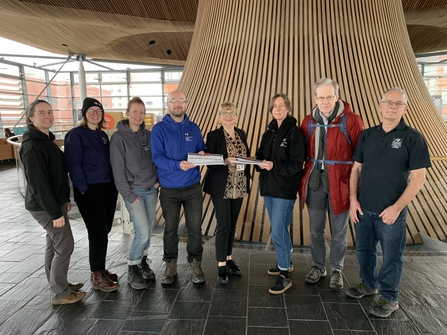The petition was ‘handed over’ to the Petitions Committee on Tuesday, January 30. The issue will then be debated in a few weeks’ time.
The call to protect this special landscape has been supported by a host of famous names.
These include TV naturalists Iolo Williams, Lizzie Daly, and Gillian Burke, broadcaster and author, Mary Colwell and Julian Hoffman, author of the internationally acclaimed book about the world’s last wild places, Irreplaceable.
The Gwent Levels are threatened by huge, multiple, adjacent proposals for solar power stations and business parks that will damage the SSSIs forever.
The post-construction environmental report following the construction of the Llanwern solar power station, included data that highlighted catastrophic damage to the SSSI, including high levels of pollution, the aesthetic impact on the landscape, and the extinction of the lapwing breeding colony.

